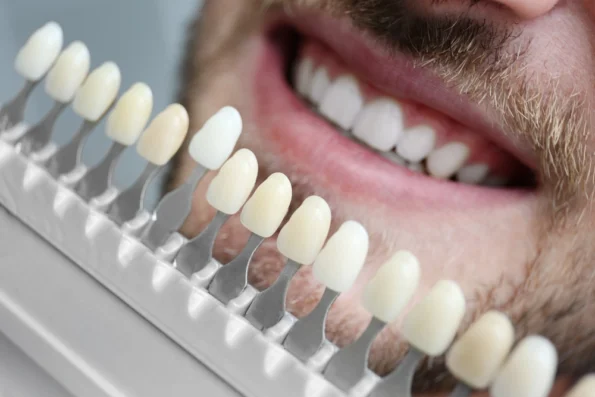
Exploring Composite Veneers
Composite veneers, on the other hand, are made from a tooth-colored resin material.
Unlike porcelain, these veneers can be directly applied to the tooth surface without significant enamel removal.
This makes them a reversible option, suitable for those hesitant about permanent alterations.
Factors to Consider:
Choosing between porcelain and composite veneers involves considering various factors, including:
1. Aesthetic Preferences :
- Porcelain veneers offer a translucent and natural appearance, closely resembling real teeth.
- Composite veneers can be customized chairside, providing flexibility in adjusting color and shape to match your preferences.
2. Durability and Longevity :
- Porcelain veneers are highly durable and resistant to stains, maintaining their aesthetic appeal for a longer duration.
- Composite veneers, while durable, may be more prone to staining over time and may require replacement sooner.
3. Cost Considerations :
- Porcelain veneers tend to be more expensive upfront but may provide better long-term value due to their durability.
- Composite veneers are generally more budget-friendly, making them an attractive option for those mindful of costs.
4. Tooth Preparation :
- Porcelain veneers often require more extensive enamel removal, making the process irreversible.
- Composite veneers involve minimal enamel removal, offering a reversible option.


